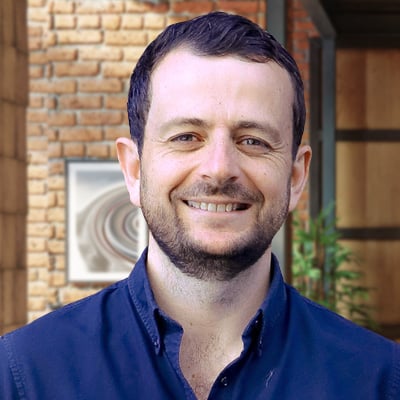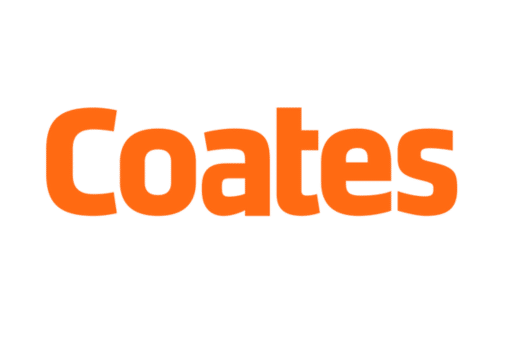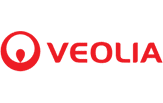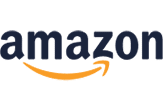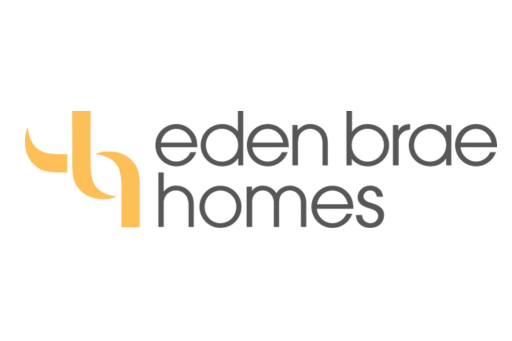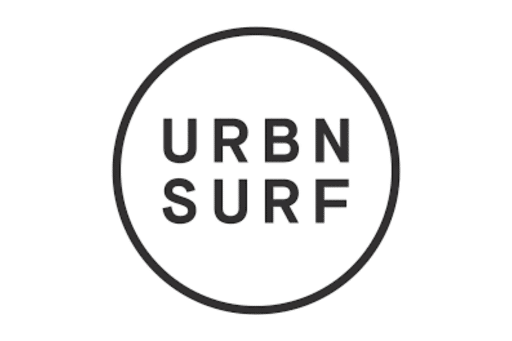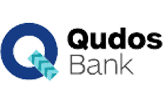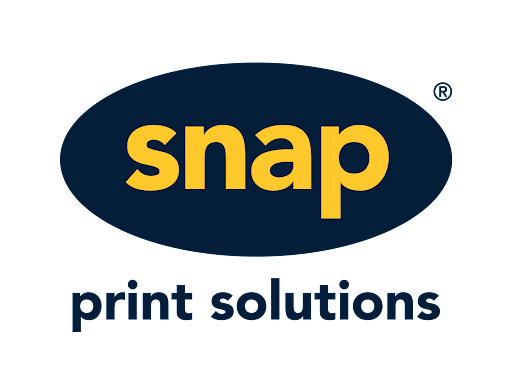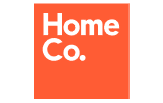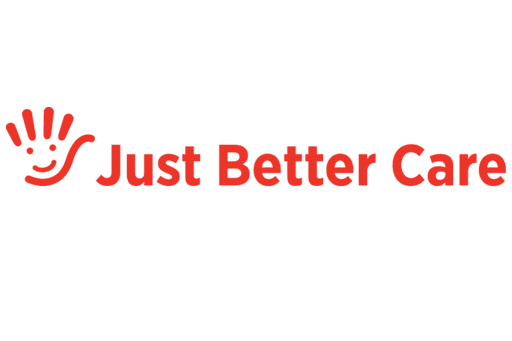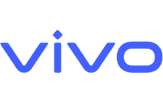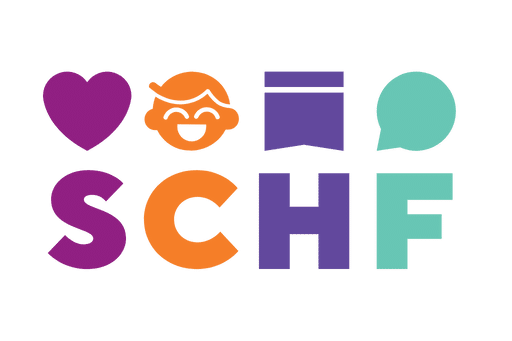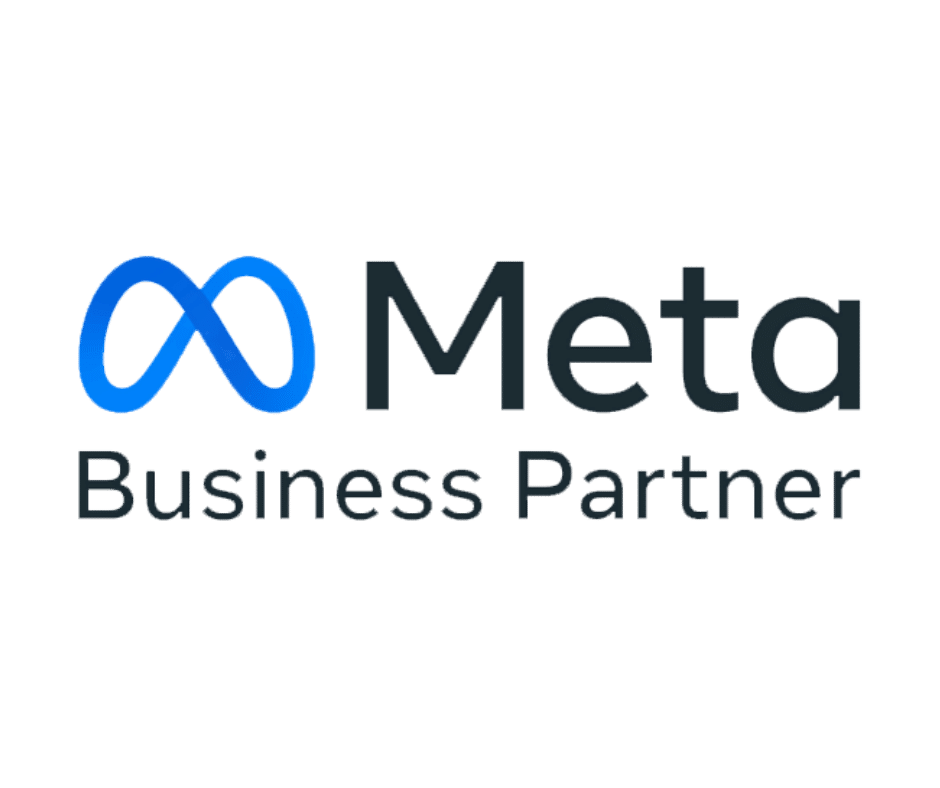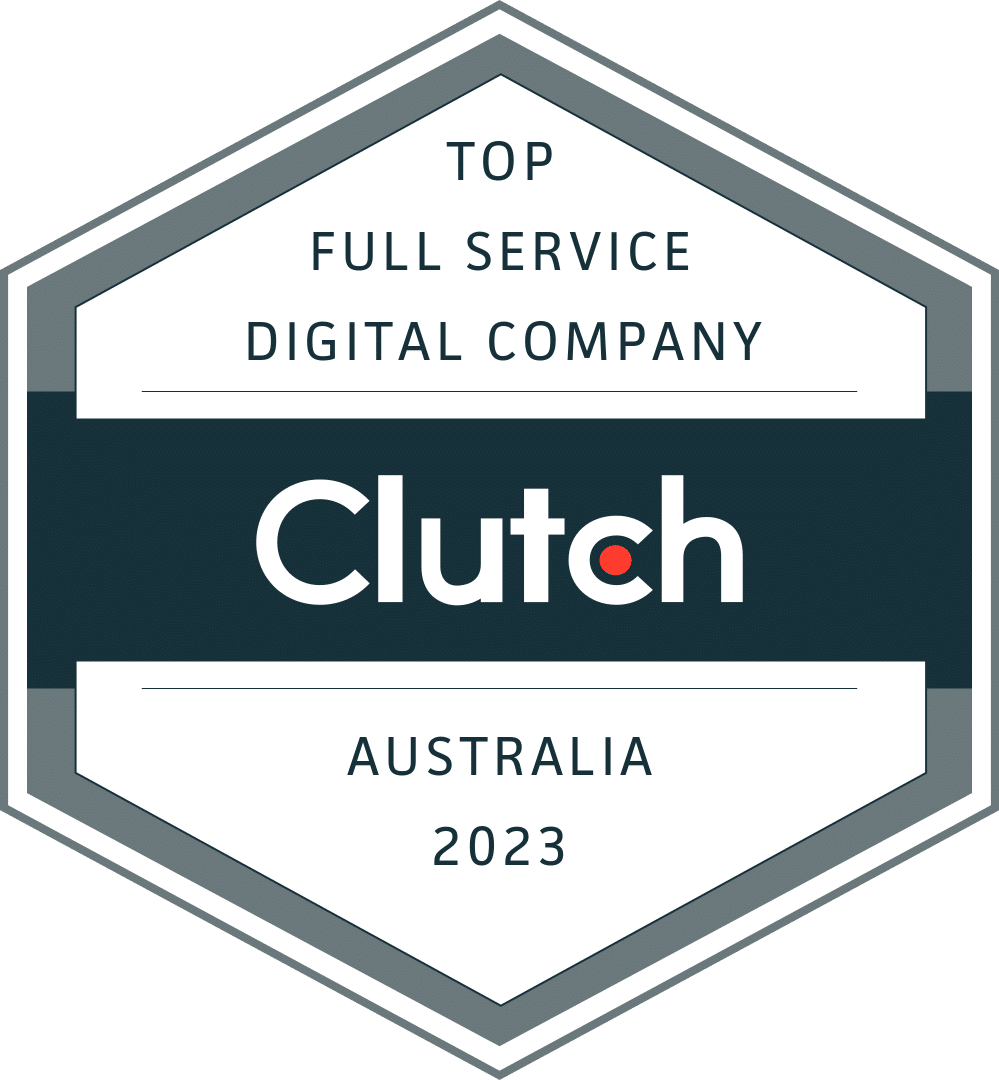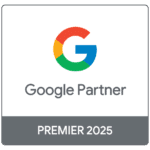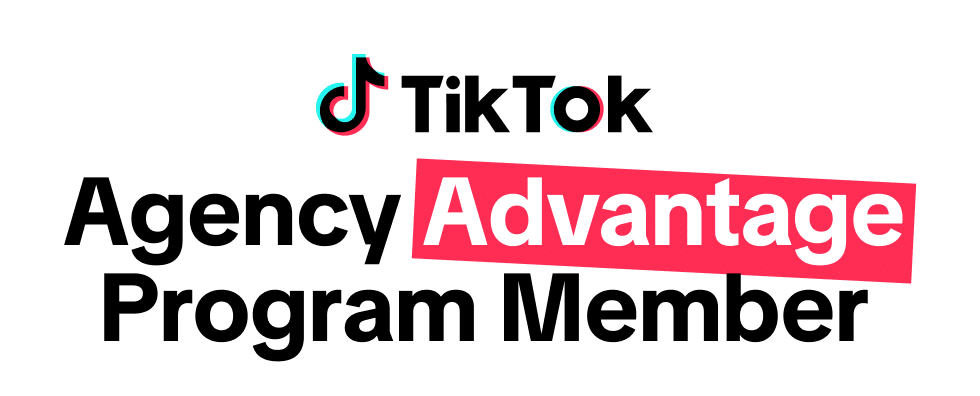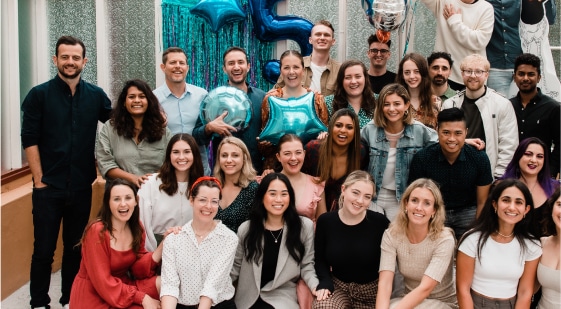Short-Form Video Secrets: Crack the Code on TikTok, Reels, and Shorts
Episode Description:
With TikTok, Instagram Reels, and YouTube Shorts dominating the organic social space, short-form videos are vital to reach large audiences and create an engaging brand image. CEO and Founder of The Social Sandwich, Edwin Smith, gives practical advice on how your brand can dominate on social platforms.
Key Takeaways:
- Over saturation of content means brands need to work harder and become more clever with the content they’re sharing online
- How changing algorithms are redefining the hallmarks of a good post
- “Entertainment first, selling second”
- Examples of brands doing organic social really well
- Relatable content > branded content on social media
- Tips for ideating great content
- Advice on video length, use of trending audio, caption length, hashtags and more
Featuring:

Edwin Smith
About the Guest:
Edwin is the Founder and CEO of The Social Sandwich and leads strategy across Facebook, Instagram, TikTok, Snapchat, and Twitter (X) for small businesses. Previously, Edwin was the Senior Social Media and YouTube Producer on The Voice Australia and was also the Senior Social Producer at Network 10. He has also led strategies for the Australasian Survivor, I’m a Celebrity Get Me Out of Here and 10 Sport.
Podcast Summary: Short-Form Video Secrets
Social Media Producer of The Voice, Survivor and more shows at Network 10, Edwin Smith, gives practical advice on how your brand can dominate social media organically through engaging short-form video content on Instagram, YouTube, and TikTok.
Successful social media marketing requires you to be constantly aware of new trends, how they’re perceived by your audience, and the implications of the latest algorithm updates. With audience attention spans getting shorter, engaging people within the first 5 seconds of your brand’s short videos is vital for standing out - especially since more content is being churned out on social media than ever before.
The silver lining is - most of the content your audience views on social media platforms is pretty average. Marketing managers need to take the time to understand what different platforms and audiences expect social media platforms, today, to make a positive impact on their brand.
Organic reach on social platforms is worse than ever
Organic reach on social media platforms has been on a decline year-on-year. Platforms like Instagram and TikTok increasingly want marketers to spend on ads to push their content to relevant audiences. More so, brands have to fight for attention with not just competitors, but other unrelated brands, influencers and content creators.
The exciting part for marketers is that, with great content, they can use still platforms like TikTok to reach a wide audience that may not follow their brand. This is because marketing managers don’t have to rely on followers, hashtags or shares for good content to go viral.
The Rise of New Social Media Entertainment Platforms
TikTok has long held the stance that it is an entertainment platform, not a social media platform where you catch up with your friends. Other platforms like Instagram soon followed suit by introducing features like Instagram Reels, where you see content from accounts you don’t follow.. Marketers and brands need to change their mindset about how they play on social media. This means that brands must now produce content that focuses on entertaining and engaging their audience, rather than just focusing on product promotion and nudging them towards a sale. This also presents an opportunity to reach new audiences by creating content that is not only promotional but also genuinely engaging and enjoyable.
Hallmarks of a Good Social Post
Audiences have a different mindset while using different platforms. On LinkedIn, audiences typically have a professional hat on, where they want to learn, read good stories about people in their network, to be inspired. This is different from what audiences expect from TikTok, where one goes to see some fun videos and light-hearted content. This is similar to what should be posted on Instagram Reels. In terms of Facebook, some businesses still see success with more traditional content, however, the nature of the platform allows for more ‘casual’ content than LinkedIn.
To get traction on TikTok and Reels, marketers need to create short-form video content that aims to entertain, educate, or inspire audiences. The content that leans into these areas tends to perform better because it resonates more with audiences looking for quick, engaging, and entertaining experiences on social platforms. That’s what people are on social media for. Rarely is the point of using TikTok to buy something, and trying to get people to buy rather than feel engaged is a recipe for getting scrolled away.
Another important thing to bear in mind is that quality is much more important than quantity - the authenticity and creativity of your videos would trump high production values any day.
The success of brands on social media is now less about polished content and more about real, relatable moments. A Reel recorded on an iPhone with the speaker holding the phone in their hand and talking into it would probably get more reach than a well-edited Photoshopped video shot with a high-quality camera. This approach not only makes content creation more accessible but also more appealing to the modern social media user.
Don’t be tied to brand guidelines
To create short-form video content that comes across as real and authentic, brands will likely have to compromise on their brand guidelines to find success in their social strategy. The lifespan of a post is typically short, and content is likely to fall off the radar in a couple of weeks from posting. Marketers have to have to operate fairly quickly in this space, leaving a tighter timeframe for approvals and edits. This also means negotiating with the leadership team on compromises that have to be made to find any success on social platforms. Short-form video content is unlikely to look and sound like TVCs, YouTube video ads, and website content.
Successful organic social media content is typically not polished, fun, and rough around the edges. It’s used differently and hence needs to have different production standards to that of other video content.
Examples of brands doing organic social right
Edwin recommends reviewing Brittany Saunders from the B2C fashion industry on TikTok and Instagram for inspiration for raw and authentic content strategy. Another brand is Frase Skincare, that showcases the founders in a highly personalised and relatable fashion.
Duolingo and HubSpot are good examples that have successfully created short-form content that is true to the nature of the platforms they are playing in.
Another example of a brand that has been able to get organic cut-through on TikTok and Instagram is RyanAir. The airline initally operateded exclusively in Europe, but because their slapstick, self-sabotaging comedy Reels are characterised by humour that goes viral, people globally know about their unique value - cheap flights with absolutely no redeeming qualities.
Tips for social media content creation
Here are some practical tips for marketers and content creators looking to navigate the new form of social media:
- Camera quality: Your latest smartphone camera should be good enough to film videos.
- Length of posts: 5 - 20 second videos get more cut-through than longer videos at this stage. This is likely to increase to 60 - 90 seconds in the near future.
- Reuse content across platforms: Post the same content across TikTok, Reels and Facebook as long as the content doesn’t use a specific trending audio. Avoid using the same content for LinkedIn.
- Hashtags: Use hashtags, but they are not as important as they once were. They won’t make or break your social strategy.
- Consistency over frequency: Focus on posting consistently engaging content rather than adhering to a strict posting schedule with average content. Two great posts a week is better than one average post a day.
- Leverage trending audio sparingly: While trending sounds can boost visibility, they should not dominate your content strategy. Relevance is more important than jumping on to every audio that’s going viral. If your identity doesn’t align with a trend, simply skip it.
- Test and learn with content: Don't be afraid to experiment new content and see what resonates with your audience. Social media is an ever-evolving space, and flexibility can help you discover what truly engages your followers.
Focus on your audience's interests: Create content that reflects not just what you want to say, but also what your audience wants to hear or see.As we look ahead, evolving social media marketing continues to favour those willing to adapt and innovate - finding new, creative ways to connect with audiences. Whether through short-form videos, engaging storytelling, or by simply being more authentic, focusing on engagement is the key to driving not just reach and followers, but also conversions and sales.
At Rocket, we specialise in Paid Social and Creative services, along with SEO, PPC, and Email. If you’re looking to up your marketing game, get in touch with our experts.
Transcript
James Lawrence: Welcome back to the Smarter Marketer podcast. I'm here today with Edwin Smith. Edwin, welcome to the pod.
Edwin Smith: Thanks for having me, James. Happy to be here.
James Lawrence: Excited. So Edwin is founder and CEO of The Social Sandwich, which is leading the strategy content, creating and scheduling social media best practices across Facebook, Instagram, Twitter.
TikTok and other social channels. Prior to starting The Social Sandwich, Edwin was senior social media and YouTube producer on The Voice Australia. He was also senior social producer at Network 10 for many years and led the strategy across a whole wide range of shows there, including Survivor. I'm a celebrity, get me out of here, along with a lot of the um, Channel 10 sport.
So today we're going to be discussing video content across TikTok, Reels, YouTube, and more. Edwin, I thought a good place to start would just be to talk about, I guess, the landscape as we are in 2024. Like what, what does the landscape look like for organic video at the moment? Particularly as I think, as it relates to businesses and brands.
Edwin Smith: Yeah, I think we're in a really. Interesting base for, for businesses and for organic content where across the board on every platform, what happens every year, right? Is that organic reach gets lower. Like, if you, if you plotted a graph of average reach across the board for every business, you know, since, you know, the algorithm was, was invented, you know, back in, you know, 10 years ago, uh, you know, it's basically every year it gets lower.
And I think, yeah. You know, a lot of factors that come into that, you know, obviously those platforms are trying to make money from us. So they're trying to make us spend money on ads, but there's also just more people posting content. So the there's less eyeballs that we can, that we can get in front of because there's more content than ever.
And I think in particular, the last couple of years with the introduction of reels, with the explosion of TikTok, it's definitely gotten, you know, I think harder in terms of organic reach. And it's not as simple as just posting content and your audience will see that content because we're fighting with brands and influencers and creators and, and everyone for, for the, for the attention. So I think what we're seeing now is brands have to work a bit harder to, to get that reach. Um, it's more unpredictable as well. There's more variance between a good post and a bad post. I'm saying, yeah, it's, it's a really interesting time.
I think that sounds really negative, like doom and gloom, but for me, I kind of look at it as a positive where. It gives brands, I think, a chance to, you know, jump in on short form videos to create content that, you know, is a bit more entertaining because I think now, more than ever, social media is an entertainment platform.
It's not just a place to go and, you know, catch up with your family and friends and see what a couple of your brands are up to that you might have happened to follow. But there's also now, yeah, through Reels, through TikTok, right, the discoverability is also bigger than ever. I feel like there's that chance of getting in front of people that.
Might not know about your brand, might not have heard of you before, so for me, that's the exciting part where it's like, if you can get the content right, you can grow quicker than probably ever because you're not relying on, you know, You know, hashtags or shares or just word of mouth for people to come across your, your account, if you make a good post and a good video, then those platforms are pretty good at showing those videos to, to more people.
So there's a negative spin you can put on it, but I like to put a positive spin on the landscape that we're, that we're at in the moment.
James Lawrence: That's a really good perspective. I remember probably showing my age here. This would have been, Probably in the late 90s going to a conference and this was when kind of Facebook at the time was kind of seeing its big Kind of growth trajectory and there was this obsession in kind of brand land to to grow your followers You know hundreds thousands type thing and there was a table shown which at the time was for every hundred Followers you have, how many will see, you know, an average piece of your organic content.
And I think at the time it was like 17 and people were shocked at just how low that number was. And I remember them getting the updated graph on that. I think it was like two years later and it was down to 4%. And then very quickly, you know, it became sub 2 percent for, for, for the average brand. And I think all those dynamics.
Seem to always be true, which is kind of platform grows organic is kind of the lever. It grows heavily with you. And then as the platform changes in terms of monetization and also just sheer volume of content, as people jump onto those platforms and reach gets harder and harder. Um, do you see very macro, like how different do you see it say with a brand that's playing heavily in Tik ToK, which I presume you might still get.
You know, better organic reach than say, a more mature platform like a Facebook or is that just not true anymore? And it is. They're all kind of similar.
Edwin Smith: Yeah, I think in terms of pure organic reach, you know, I think TikTok still is the one where, you know, not that it's easy, but the easiest platform to get those, you know, if you're just looking for some big numbers and some big views, then, then TikTok can still give you those.
It's certainly not what it was, you know, 12 to 18 months ago, where, you know, you could almost be guaranteed a few thousand views on, on videos and potentially more, um, if you, you know, get something right. Again, I think more brands have realized that TikTok is, Is pretty useful. I think TikTok is an interesting one because what I've seen is you can get a lot of views, but you know, it's hard to translate those views even just into followers.
So, you know, you might get 50,000 views on a video and blow up and you pick up 10 followers from it. And so, you know, while the views are there from a business perspective, it can be hard to kind of go, you know, how do we then convert those views into followers and those followers into, you know, website traffic or into sales or, um, you know, actual conversions.
So yeah, it's an interesting one. And I think. I'd imagine that TikTok will continue on that same trajectory we've seen for every other page, every other account, you know, Instagram, Facebook, and By next, this time next year, the reach will be, you know, it'll be slightly lower again. Not that it's a spiral, but um, yeah, downward, downward trend.
James Lawrence: Yeah, we say the same thing with TikTok in the agency as well, where you do often get incredible reach numbers. And if you're in the paid side of things, you can get quite cheap traffic, but kind of commercializing that is, is often a bit different versus traffic from other channels. What about, I mean, you've, you've touched on short form and reels.
Can maybe just for the listeners that maybe not. natively using social media themselves as much. I think like a lot of listeners, I could be probably heavy LinkedIn users and then would probably be quite divergent in terms of personal social media platforms. But if we could just talk a little bit about short form and talk about, you know, what reels are, how they work and how they've kind of changed the landscape for your Facebook and your, your YouTube and Instagram.
Edwin Smith: Yeah. So essentially what kind of happened in the way that I like to talk about is Tik Tok came along, that lines up pretty much with the pandemic as well, where, you know, a lot of people were, you know, locked in the home looking for things to do, looking for a distraction, looking for anything to do.
Tim Tok came along, obviously it was around before then, but it really blew up in that first year of the pandemic. Facebook and Instagram looked at TikTok, they're like, holy crap, there's this exploding new platform. Everyone is watching short videos. And when we talk about short form videos, it can be from anywhere to 5 to 30 to 90 seconds long.
I think that kind of, you know, 5 to 20 seconds is around that sweet spot that we see. But there's certainly a trend to keeping people on a video for longer now. And I think TikTok and Instagram are both recognizing that. You know, they don't want people just watching like a four second clip anymore. They want them to stick around a bit longer.
Yeah. Not as clear cut, especially this year. I think the importance is going to flip a little bit to slightly longer. When we know about longer, I mean, maybe a minute, but that's still reasonably short form, which is crazy when you, when you think about it. But yeah. So, so what, um, Instagram and Facebook did, you know, obviously with meta, they, they saw that and they were like, holy crap, we need a slice of that pie.
We need to get in on that. And so they. You know, I think it was a pretty hasty launch of Instagram reels. Um, it wasn't on Facebook reels, but on Facebook first and reels was as if platforms can do pretty well. They just, they take the best features from other platforms and repurpose it for their platform.
And what I think reels do differently and. The shift that's happened in social media is, you know, when you go into the reels tab on Instagram, you see content from people that you don't follow. And so it's a, it's a curated feed based on your viewing habits, things you've interacted with in the past. And, and basically what Instagram thinks you'll enjoy watching and thinks that you'll enjoy seeing content from, because they recognize, Hey, there's a whole bunch of content out there that we're just not seeing because we're, Friends and family and our sports teams and you know, maybe a few brands, but there's always other great stuff out there from comedians and creators and people that you're just not seeing, so we're going to show you that content and so that kind of changed and TikTok for me has changed the way that brands think about social media, or at least should think about social media in that it's now an entertainment platform because um, If you can entertain people, then you can be shown up and seen by people that not just in your audience, but, you know, a new audience as well.
And kind of bring those people in by, by entertaining them. And so, you know, TikTok labels themselves as an entertainment platform, not a social media platform. Like it's not about your friends on there. It's about going down that TikTok wormhole and just watching a bunch of cool videos that it thinks that you'll like and, and Reels is very similar.
So as, as brands, if you're not, playing in the real space. I think you've, you know, you're probably already pretty late, but you should be doing it, you know, ASAP to, to jump on there. Um, it's certainly not as easy to, to get some good numbers there as what it was 18 months ago. I mean, it's exciting because it, you've never really had that on Instagram, you know, outside of the Explore tab, which, you know, I still feel like there's a lot of people that don't even know what that is or, or even use it.
So that discoverability, element of Instagram that hasn't really been there that gives us the chance to be seen by new people and grow. Yeah, that's, that's pretty good.
James Lawrence: Yeah. I was going to say it if you didn't, you kind of used the words I was going to, which is the whole TikTok doesn't see itself as a social platform.
It sees itself as an entertainment platform. And I think that is there for a shift. I think that if you're an in house marketer, you need to make that shift, which is. It's different now. If we're going to play in TikTok and if we're going to play in short form video, you kind of almost need to change your own mindset, which is we have to come in and play TikTok.
Which is about entertaining users as opposed to potentially coming in with our own purpose. I'd be really curious, Edwin, just at your experience, like you spent, I think you're at 10 for five years or something like that. Working, um, working across a range of their different products and offerings, senior social producer, You worked on The Voice Australia, and that's a huge amount of time, I guess, to be playing and testing and seeing what works and what doesn't, and also quite diverse shows, I think, working with, you know, with from sport to entertainment, whatever else.
James Lawrence: What are the things that you learned in that role and previous roles that you're now applying into B2C and B2B marketing for Australian businesses? I guess like, how can we learn from your, from your learnings?
Edwin Smith: Yeah, so look, I think first I was pretty lucky to have those, yeah, that experience and the jobs that I had, you know, I'll always look back on my time, you know, especially channel 10 where we're a pretty small team.
We had a lot of, you know, creative freedom as well. Like I think there wasn't a lot of, you know, approvals or things that we had to kind of run up the chain, which was, which was great because.
James Lawrence: Did you get in trouble for anything?
Edwin Smith: Oh, a couple times.
James Lawrence: Anything that you can talk about on the pod?
Edwin Smith: Uh, what did I get in trouble for?
There was a, this is a good one actually. Um, and I've forgotten about this until just now. Um, one of like, the best things I did as part of my, you know, career highlight was my worked on, I'm a celebrity, get me out of here and. The, I did three seasons of that and worked in Africa. So it was literally like, you know, in the middle of Africa for, you know, spent close to six months in Africa across those three years, which is, which is unreal, but, you know, you have like a really tight team work closely with the production side as well as the Channel 10 side over there.
But from the Channel 10 side, there's only a handful of people that go over there. We, I think it was the first year we were there. And we did like this just stupid video compilation of like, People burping and like, heaving, you know, almost like throwing up in one of the trials that they do. Our video editor like, cut it together to the like, duh duh duh duh duh, duh duh, duh duh, like that tune.
And so, after that, the duh duh, it was like a vomit basically. And so, we put that together and we're like, this is the funniest shit like we've ever seen. And basically went to our boss, Like the head of the show that was in Africa. And we're like, we've made this, like, it's a bit on the, on the edge of, in terms of like, how many posts, it seems like that's where I was posted and we posted it and then got a call from, you know, back in Australia, because there's always that weird divide between like, you know, the African team and the like Sydney team, like, what the hell is this?
You've gone crazy. You've been locked up for two months. This is so immature and like, so just like not what the show's about. You know, it's a family show and we're like, Just a couple of people, like, dry heaving, you know, and it's, this is, like, comedy gold. And I remember being, like, very, like, quite worried about it and being like, I'm gonna be getting in trouble here.
But then, yeah, the big boss came over and was like, don't worry, we got your back. We thought it was great. Um, you know, that, that is what the show is about. It's silly and it's fun. And I think, yeah, going back to your, your kind of question that, those things I spoke about around content, I think I really learned that from, you know, five, six years ago where, you know, you're working on these shows, big noisy shows.
And. The temptation was to say, Hey, the show is on tonight. And that was always the directive, you know, we're trying to get people to watch the show. The ultimate goal is to get people to watch, you know, 7. 30 on Sunday. Tune in and watch I'm a celebrity and, you know, a strange survivor or whatever the show was like, it wasn't just me, like work with a great team there.
But our thinking always was, let's not just post a photo that says 7. 30 tonight. Let's try and think of ways of getting people to watch something or to post something that gets people there and engaging and interested in the content. And we'll still have that message in there, but it won't be the focus.
It'll be, you know, the second line or copy or, you know, a little watermark in the corner. So people are still reminded of it. But what we worked out pretty quickly was obviously you post a promotional image, people don't care. You post something that's fun. People care and the engagement's massive. And then all of a sudden people are actually watching and sharing with their friends and they're ultimately promoting the show for you because you've got that, you know, a line of caption. And then the second line says, you know, I'm a celebrity seven, eight, nine, 10, they're still getting that message, but it's just in a more subtle way. And, and I'm trying to use those learnings ever since.
And I think it's more relevant now than ever. And as a brand, you know, whatever brand that you're working for, like you want to promote what you're doing, but if you're providing something directly and that's all you're doing is saying, “Hey, here's the product, here's where you can buy it. Here's my services”.
Come and do this. You're not going to have any success because it's boring and that's not what people use social media for and it's so much more prevalent now where, again, we know social media has turned more into an entertainment platform and so entertaining first and then selling second is like that, probably that biggest lesson that I learned because I saw the reach numbers that we got on those massive pages, you know, that have Tens of thousands, hundreds of thousands of likes or follows on Instagram and the moment you did something that was boring that people just wouldn't care no matter how big your audience was, so yeah.
James Lawrence: Yeah, it's interesting, isn't it? And when you overlay it now with the algorithms overweighting the way that users are interacting with content and potentially then ceding content to a whole bunch of people that have never been exposed to your brand before. If you are posting content that just doesn't have that interest or virality.
Then it just doesn't get seen anymore. And like, that's always kind of been true to a certain extent, but it's interesting when you were telling the story about a post in Africa, we'd suspect that most listeners to the pod can kind of resonate with that. Cause I think in their context, it might not necessarily be someone vomiting and making silly noises, but it's the reality that I think often we, as marketers know that in order to get traction socially, we need to put content out there that.
It ticks the boxes that you've just described. It's entertaining and gives value to the person that is seeing it. But the temptation is, I think, from C suite, non marketers, or people with certain kind of interests in an organization, it's kind of, you know, do the post that talks about us and puts us forward.
Essentially the equivalent of the, Tune in at 7. 30 p. m. to watch our show, which is no one's, no one's going to engage with that. No algorithm is going to seed it and start showing it to people because it's just fundamentally not very interesting.
Edwin Smith: Don't get me wrong. It was, it was a battle like it was constant battles with, you know, the different teams within the business to Try and, you know, almost like educate them around, you know, while we're doing this.
Because it is hard to say, if you post a promotional image, it's going to reach less people when they look at the numbers and go, well, we need 100, 000 people of our Facebook followers to see this post. So let's post this and then they know that it's on. And it's like, well, no, like maybe 2, 000 of those might say it if the post sucks.
So let's do something that gets 50, 000 reach and, and actually, you know, communicates that message. And it certainly wasn't easy and there was many battles, I think, that we lost where we tried to have a bit of fun and they were like, no, you have to do this. And it's like, Transcribed by https: otter. ai That education piece is really important to get people across, you know, the wider business across what you're doing.
And I think that I definitely learned as well, you know, across a couple of years that I was there where you can't jump in the deep end. And pretty sure that was the first year that I was working on Nightmare Celeb and, you know, dry head montage. And I was like, maybe that was a bit too early. Like maybe that could have been a year two thing once, you know, you built a bit of trust.
The C suite, the, the big bosses, they understand what you're trying to do and they, they know that the reason for that is, is this, for jumping in the deep end, they get scared off and yeah, it becomes harder to do, but, and I think sometimes as well, there are certainly times where you kind of go, well, do the bad post, but, We're going to do a fun post as well and, you know, tick kind of both boxes.
And for me, like there was times I was like, Oh, this post is just terrible. It's, you know, it's awful. Like nobody's isn't going to care about it. But at the day, like it's not going to be the end of the world. If you share something that maybe isn't quite as engaging or as interesting as what we want, as long as we can spoil it up with something that is a bit better.
James Lawrence: And can you talk a little bit about like, I want to talk about ideation a little bit later, but what are the hallmarks? Of a good post and we get lots of questions around, you know, what's the optimal length of a post? Is there a structure, a format, like how do we try to captivate someone's attention early?
I presume that's important. And then if you could talk a little bit about how it differs depending on placement in terms of channel, like is something that we're putting on LinkedIn different to what we're going to be putting on TikTok, just in terms of the hallmarks of a good video post.
Edwin Smith: Uh, that's, well, that's kind of like the main of the question, isn't it?
If you can get that right, then yeah, it's, it's obviously great. I think there's a lot of similarities, a lot of differences between the platforms. I think LinkedIn, obviously, is probably the most different because the way that I think about it is people go there with a different mindset. Like you're going there with a professional hat on, right?
You're not bored at work going, I'll go have a scroll of LinkedIn and, you know, watch a few fun videos. You're going there to learn, to read a couple of good stories, to feel inspired. So I think in terms of the content type, it should be different to what you post on TikTok. It can be more, you know, fun and irreverent and, and a bit more silly.
Um, and that, I think that's your kind of spectrum. You've got it. LinkedIn on one side and you got TikTok on the other. Then I think next to TikTok you've got Instagram with Reels and with, with content there. Then I think you've got Facebook that kind of varies because Facebook for some businesses is still really successful, for others it is almost irrelevant because of just how low the reach is.
But I think there's still some, some fun to be had. On Facebook, I think that Facebook Reels in particular over the last kind of six months have gotten a lot better. They, they seem to have worked out the algorithm a bit more, there's a bit more of the cross sharing ability with Instagram, which I think is pretty important.
So I do think that kind of Facebook Reels this year is, is kind of one to watch and one to, To experiment with if you haven't already. They've got the algorithm right, and it's becoming a bit more prominent and Yeah. A bit easier to share from.
James Lawrence: Would you be advocating that clients post the same ? I was. I knew you were gonna ask.
That was like, and, and I knew I was always gonna ask it, but I am, I am asking the questions that I get asked Edwin. See,
Edwin Smith: I know. Yeah. You're, you're just flipping the script and I know the answer's
James Lawrence: gonna be, it depends, but I, I kind of, um, yeah.
Edwin Smith: I, I tend to lean towards Yes. Like, I think. A good TikTok video can work on Instagram, Facebook.
I think LinkedIn is probably the one where you would go maybe not, depending on again what the content is. If you're investing in making like a super entertaining 10 to 20 second video, and it can work if it's not based on a trending sound, if it's not like a super TikTok specific trend that's only on TikTok, I think, talking to the camera, if it's something that's a bit fun that showcases your business, I think, For me, I'm always up for trying to share across multiple platforms.
I think sometimes we get too tied down in that's TikTok content, that's Instagram content, that's Facebook content. In a perfect world, maybe it's, we always have different edits and different versions for different platforms and, you know, get old a bit. Bit rougher and a bit sillier on TikTok and a bit tighter on on Facebook, but not always the case with budgets and team sizes, right?
So I think especially at first like if you're new to the short form video game tracking it kind of everywhere you know Facebook, Instagram, TikTok and Just keeping an eye on how things go is always a good way to go because six months time you might have some learnings to then go Okay, this type of content really works on TikTok It doesn't work on Instagram, but this type does.
So let's start to then shift off from there. So yeah, not a clear cut answer, but I think I'll say yes, you can.
James Lawrence: Yeah. And then are you making decisions? Like, how are you making the decision around which? of the platforms to engage in like I, you know, I suspect if you're a super hard nosed B2B business where you're trying to hit HR managers and that's the only kind of cohort of user that you're really trying to influence as a marketer, you're kind of then leaning into LinkedIn and having kind of some support around the other channels.
Like how would you approach something like that versus say a straight B2C play, e commerce, skincare range or something like that?
Edwin Smith: Obviously it depends on the business and, you know, your target audience, who they are, and, you know, where we think they are. It's always an interesting one because, you know, you can make the argument that your HR reps are probably on TikTok as well, right?
And I think it's probably naive to think that people are only on one platform. I think the latest numbers is like we have seven social platforms as an average. So, you know, it's not like we're just on one place, but in that example, it does make sense to, to lean in a bit more to LinkedIn and start firing off like corporate content on Tik ToK.
It really depends on the business and it's going to change for everyone. And that's something that I always kind of talk about is what works for one business isn't going to work for another. And I think you need to spend the time to work out. you know, what works for you and your business and where your audiences work at, what types of content they're watching.
See if you got, you're getting results on these different platforms and most businesses aren't going to have huge success on Facebook, Instagram, TikTok, LinkedIn. I don't think you're going to be just nailing it on all four platforms. And so what I try and do is get to a place where you, you might be on those platforms, but it's like, you know, our real focus is Instagram and TikTok because that's where we're getting the most results.
And then businesses think that they have to follow what someone else has done or like that. That that's the way to do things when, you know, every audience is going to be different and engage with things differently. So you kind of need to spend the time to work out for your business, like what actually works and do the research, but also do the testing.
And I think I'm such a big fan of just testing content as well. Like, you know, try some things, see what works, see what doesn't. Like you can get some great learnings from the numbers and use those to your advantage and go, yeah, that was, that was a good post. Let's, let's try and do more of that.
James Lawrence: Does fail from looking at clients over the years that have succeeded in this space.
It's done is better than perfect. Like getting stuff into market, testing, learning, getting data. And I think naturally. Which I think is broader than digital and broader than, like it's essentially a marketing thing, which is, I think you start to find there's just places where you play strongly and it resonates and just kind of keep working in that space, always having your test budget, you know, TikTok starts to grow, put your foot in the water, see what works, what doesn't, maybe you start to really move heavily there, or like we've tried over the years so heavily I'd rock it to see if we can get Facebook and Insta going for us and to a lesser extent TikTok and just never worked.
I don't know if it's just the nature of who we are, if it's the nature of the type of clients that we attract. LinkedIn just is our place to play. We see Insta working really well for us just from a recruitment viewpoint. Like for us, it's just a different, uh, different audience that we're playing. And we decide that, you know, we'll put our focus in terms of as it relates to social into LinkedIn, but I know there's other agencies out there that have done really awesome stuff with Instagram it's worked for them, but I think you're right.
Like I think just cause it works for. one of your competitors or kind of an adjacent brand doesn't mean it naturally will work for you.
Edwin Smith: Yeah. Oh, that's, that's such a good point. And I love what you said at the start there around, it doesn't have to be perfect as well. And I think that is something else that I think TikTok has brought to the social media landscape in particular, Instagram, where if you're posted at 80 percent and you're trying to make it, you know, a hundred percent, you're trying to perfect the edit or make your photo look even better.
I would rather just get some, some posts out, you know, get some runs on the board than try and make it look perfect or tweak your caption to make the right words or whatever that like fine tuning is. Off the back of TikTok, I think what What is actually resonating now is more real and authentic style of content.
Like it's a little bit more rough around the edges. It's not that influencers of 2020 where they're like photoshopped, they're on holidays, we follow these people to be like envious of their lives and everything that's put on Instagram is like really is the perfect version of ourselves or our brands.
Whereas now it's like, you know, we want to know those same people, those same brands are just like us, that, and we, well, can we learn from them? How can we relate to them? You know, you open TikTok and every, most of the posts you see is just someone, like, talking to their phone, and it's that, like, super personalized, more rough in terms of, like, how it's shot, how it's edited, but The content is, is really strong because, you know, it's super personalized.
It feels like they're just talking to you. I know it's not quite related to what we're talking about, but it just triggers when you're saying that.
James Lawrence: I'm like, I need to, I need to drop that one. Yeah, like once again, looking at the clients of ours that do, that succeed in this space. You kind of need to reset the rules of engagement because obviously things can go horribly wrong where someone managing social media posts something out on behalf of a brand and and you know we've seen examples of it right and suddenly you've done you've become the story and all kinds of damage has been done but the reality is is that To succeed in this space, you're going to have to compromise on a lot of the steps which you used to go through to have a TVC created and spend the million dollars on it and the six months and then for it to go live.
Like you often need to be able to move really quickly in this space to take advantage of a particular idea. Often you have to compromise on your style guide and brand guidelines because you just can't operate within TikTok if everything you pump out there is feeling like an ad. You almost got to do this.
Before you decide to engage in the channel, and I think that is something which, if you're not in these channels at the moment, or if you are and you're struggling, you almost have to go up the food chain and say, if we are to engage in this space, these are the compromises we're going to have to make, and the overall benefit is, we'll be faster to market.
This content is, to a large extent, kind of disposable, right? Like it, most of this content is running for days, weeks, It quickly falls off the radar. So I think it's hard, particularly for bigger, kind of more conservative organizations that move slowly on things. If that's you, it's something you have to take into account because you're not going to be able to keep doing business the way you've done it and also succeed here, so you're almost best off not doing it at all, or you get approvals to get around it.
Edwin Smith: No, I think that's such a good point. And something that I often talk and especially when I work with, you know, larger brands is I think they, they want to have their brand guidelines. They want to have. You know, really polished content. They want everything to look like a TVC, to look like a YouTube ad, to look like their website.
And for me, it's like, I actually think we should be thinking about social media as like a different property. It's like, it's not the same and it can't be the same as your website content. It can't be polished. It can't be worded in the same way. It has to use a different language. The way that you shoot it has to be differently.
Like there's so many times when I'm working with brands that I'm like, You know, let's just take a phone and a microphone on a shoot rather than, yeah, doing the bells and whistles because that's going to look native to the platform. It's going to feel more real and you're going to get better results than, yeah, building a 30 second TVC and spending a heap of money on it versus take the phone, you can grab 10 pieces of content.
James Lawrence: What are some brands that do a good job of that? The kind of I guess to some extent their social content or are happy to shoot on a, on an iPhone or some pretty basic equipment that listeners could kind of point to if they need to help fight this battle internally.
Edwin Smith: Yeah. So I've got a couple there.
There was one that we talked about earlier. I'm going to come back to them. Um, cause another one's jumped to my head. The industry leader in Australia right now is Britney Saunders on Instagram. So she has a couple of like fashion labels that, and like a couple of like physical stores, and then like a big online like retail store.
And I've followed her for a while. I've even stalked her enough that I actually went back to her 2018 just to see like what she was posting and some of the workshops that I run I use her as an example of. showing how she went from a classic model, you think of like Instagram of 2020, like that's her, you know, pinky peachy tones, beaches, everything looks beautiful.
It's that like envious style of content. And now you look at her content, it's shifted from image to, to video. But it's fun, it's rough around the edges, it's shot on a phone, cardboard boxes in the background of their, like, warehouse, you know, that's not on a set, it's just her walking around with a microphone, she brings in her staff, it's super personal, um, it showcases her, like, she has, like, fun personality, and that obviously helps.
You know, Instagram in particular, I always think that like fashion is probably like the most precious in terms of like how they look and the style, the aesthetic of, of content. She goes the other way where it's like, I just want to make, show people around, have a bit of fun. She did a great little series on like educating people as well, where she would, in her warehouse, again, like terrible backdrop, but she was showing the price of shipping.
So she was like, Oh, I bet you didn't know this. Like when you get free shipping, it's still cost us. So I'm going to show you how much the shipping costs. And she'll put like a real package on the scales and be like, Oh, that's going to cost us 21 and 70 cents. And it was just like super interesting content, a great way of like bringing people into our brand.
She very rarely talks about like, Hey, we've got a sale on coming by this. And when she does, you know, they made a fun video announcing a sale. I remember a couple of weeks ago where, you know, just her talking to the staff and being like, Hey, what do you reckon? Should we have a sale? And she's like, no, we just did a sale.
No, no, I want to anyway. And like, It was just, it's just such a refreshing way of like, promoting content, so, yeah, love her. It's weird, I talk about her a lot, and like, obviously I've never actually bought any of her like, women's clothes. But she, she for me is like, just someone that I love watching, watching her content.
And I actually worked with these guys at the start of this year, which, um, you know, it was cool to, to kind of help them out a little bit. Um, so they're called Frey's Skin, so they're just like a, um, a skincare range for, for guys. Two tradies that, um, decided they didn't want to be tradies anymore to young guys and started like a skincare range.
And what they did really well, I think, was just kind of documented their journey. And so they kind of brought people along on their journey. And so now everyone's kind of like cheering for their success. I think the first person I saw there was a board of billboard in Brisbane. And then like went to the billboard, filmed themselves at the front of the billboard, being like, holy shit, like we're on a billboard.
And that kind of like way of thinking about content. It's, it's those two front and center. It's them talking about their products, it's them explaining things, it's not often that they do, you know, that, again, that promotional side of things.
James Lawrence: Ones that are worth looking at for different purposes is Duolingo, which was kind of the case study, the very kind of rise of TikTok, like seeing a brand that so quickly was okay putting aside all of its traditional guidelines around how it Creates content and brand guidelines.
They've now got 239 million likes, 11 million followers on TikTok. Just incredible. And just an example of if those guys had gone in there and just were trying to sell the app and sell language lessons. There's just no way, but they've actually come at it. Kind of customer first and put great content out there.
Um, HubSpot runs their own, um, TikTok channel and the content is amazing. that they use on TikTok is very native feeling TikTok content, which is a good example of a B2B brand, which has gone, if we're going to play in this space, we need to do it in a way that That is actually sympathetic towards the channel, so I think they're probably good ones for the listeners to um,
Edwin Smith: if you haven't looked at Ryanair as well, like the, the budget airway, like, I think they're budget Europe, um, airline, I don't know how they do some of the things they do, honestly, like, they basically just like roast their audience and they're like, they're like, we know how, we know how cheap we are, but like, you're still going to fly with us because we're cheap. And they, they play off that thinking in their, in their content, and I'm obsessed with, with what they do and the way that they just like, shitpost basically, but everyone, everyone loves them, and they're like a social guy, I think he's left, I think he's speaking at a conference over here, at State of Social this year, so I'm, I'm actually so interested to see like, what he says about it, and like, how he kind of got that across the line, because Yeah.
Walking into like an exact room and being like, Hey, we're just going to troll our customers.
James Lawrence: Probably not. And probably not, uh, probably not an approach that'll work for most listeners to, to the, no, exactly. Um,
Edwin Smith: there's so many brands now that are doing that. Like a couple of others. Um, even just, I was looking today, not quite like my, my thing, but the artist Fred again, um, who's like massive at the moment, it kind of came out of nowhere.
Um, he just like built this crazy community of people that love him. And I saw that he literally announced his tours with like a screenshot of his app. And so he just like wrote. On the iPhone notes app, like, I'm playing at these places in Australia, and it's like posted that. Each of those places have sold out.
For me, it kind of shows like, you know, you don't need, you know, an amazing, like, launch graphic if you've got that community of people. Obviously he's, like, spent a bit of time building that up, but, um, yeah, love that. Drool by Dr. Chris Brown, like a pet care range. Obviously uses, like, Dr. Chris Brown, pretty good looking dude, and dogs, so like a little bit of like a cheat code for Instagram, but, um, you know, it's often like him literally like talking with the green screen, and talking about like how to help your dog, you know, that's the one where he has like, If your dog has itchy paws, here's how you can avoid that happening, and so it's kind of like educational, and then at the end it's like, This is our product that can help with that.
And so it's, um, it's a good way of selling things as well. So once you start, you start to see this content, like it'll be content that you can actually engage with and you'll start to realize like that's the way of selling. Now it's. It's engaging first, it's selling second. That's, that's what the best brands are doing.
And you just won't actually see the other brands because their content won't be showing up on your feed.
James Lawrence: That's it. It segues beautifully into the next area I wanted to cover, which is ideation. Like how do you advocate that marketers come up with ideas, um, if they themselves should be the ones doing it, but like what are some, some tips, tricks to how to come up with ideas that are actually going to be interesting and work?
Edwin Smith: The first is. And once you think about like entertainment first, I'm thinking about goals that we have as a business. Do we want website clicks? Do we want people to come into our store? Do we want people to sign up for our course? You know, whatever those like business objectives are and understanding that, but then understanding our why, but then also the audience's why.
And I think that's what businesses don't do often is, you know, we post things that we want our audience to see. But we don't think about like what our audience wants from us. And if we can post things that's interesting for our audience, you know, solve a problem. make them laugh, make them feel something, something like that.
And again, that's going to vary for every, every brand. Like not every brand should jump in and start trying to be funny and crack jokes, but you know, maybe, you know, you could jump in on and lean on the education piece and kind of teach people some things and then say, Hey, if you want to learn more, here's the course that I'm, that I'm doing or however that looks.
So kind of thinking at it from an audience's perspective, and then my kind of three pillars. That I try to think about is entertain, educate, or inspire. So if your content can do one of those three things, that's not saying that every brand has to cover each of those, but They're a good starting point to go, if you're a bit of a lighter brand, let's try and entertain people.
If you're, um, someone that, you know, wants to position yourself as an expert, let's educate people. If you're a travelling brand, let's inspire them to, to make the next trip or like, obviously a lot of ways that you can go about things from, from there. But that's kind of my starting point from there. You can go a whole bunch of different ways and you kind of get them into like the, the testing and learning and adopting and changing as, as you go.
And I think that that's probably a really important thing that again, a lot of people don't do, like the amount of brands that come to me, they're like, Oh, and we're like, we've got all these, we've got a hundred thousand followers. Like we've had them for 10 years, but in the last like two years, just like our engagements dropped.
And it's like, well, have you, have you changed anything? Like if you tried some things like, no, I've been, this has always worked. Like this has always worked for us. And we need to change. I mean, it's a, Try some short videos and you should, you know, add a bit of personality to move with the times. A lot of brands are still stuck in that kind of pre COVID, pre TikTok era of thinking about content.
James Lawrence: So what about just any, and I'm going to rapid fire here because we are getting close to close to time, but I'll,
Edwin Smith: I'll do 10 second answers.
James Lawrence: Yeah. I love this. This is just nitty gritty and you, and the answer can be, it doesn't matter as well. Video length,
Edwin Smith: five to 20 seconds
James Lawrence: Camera quality.
Edwin Smith: Doesn't matter, if you have a good phone. So like, don't shoot on like an iPhone six, but if you've got a new iPhone, then it's, you know, the camera quality is good enough and should be good enough
James Lawrence: using trending audio.
Edwin Smith: Yes. Useful, but do it sparingly. Like your whole strategy shouldn't just be like jump on trending audios because it's probably not going to move the needle as much as what we, what we want.
But yeah, trending audio is good. I almost think of trending audio was like kind of hashtag. Like when people are watching audio that's trending, They'll see more videos using that trending audio, so they work in a similar way to hashtags. So if you think about it like that, yeah, not on every, every reel shouldn't just be jumping on like a trending audio.
Cause then yeah.
James Lawrence: Caption length?
Edwin Smith: Uh, varies depending on how much good stuff you have to say. Hashtags? Use hashtags, but don't They're not as important as what they once were. They were like the real key to growth and discoverability on Instagram. They're not going to save a bad post. So they're going to help a few more people see a good post, but they're not going to make or break anything that you do.
So don't stress about it.
James Lawrence: Yep. Should be posting once a day, five times a day, once a week. Frequency. I can see you laughing.
Edwin Smith: No, I reckon I could have scripted, I could have predicted like half these questions, I reckon. Do you have, is your next question about when's the perfect time of day to post?
James Lawrence: No, but it is now.
Edwin Smith: Um, so what was that question?
James Lawrence: Essentially, how often should you post?
Edwin Smith: This is again, another one of those things that's going to change for every, every brand and every business. I think because posts are traditionally, are leaving a little bit longer now, like often you'll see a post kind of circulate, and a good one for a couple of days, so I'll never encourage a brand to post every day if they don't have the content to post every day.
But consistency is actually the most important thing. So, you know, how often can you post consistently great content that's actually engaging for your audience? If that's three or four times a week, then let's do that. If you can do that twice a day, then awesome. A few years ago, you probably would have wanted to get to that like once a day mark.
Well, I don't think it's as important anymore.
James Lawrence: Yeah, great answer. Um, and then I actually wasn't going to ask day of, day of week or time of day. But is there any advice you'd kind of give to people in that space?
Edwin Smith: It used to be really important, um, and now I think it's less important. It's worth keeping in mind.
Like, don't post at 3am on a Friday morning. We know that posts are living for longer and so if you've got a really great piece of content that is. Will work. It doesn't matter if you post it at 9am in the morning or 5 o'clock at night. Um, because ultimately that will still keep circulating and living for, for longer.
Find a sweet spot that works for you. You know, maybe it's like mid arvo or early evening or something, but don't overthink the room on that one.
James Lawrence: Yeah, cool. That is awesome. There's so much good stuff in there. I think any, any marketer that He's already in the space or he's thinking about it or he's struggling to get by and I can't see how you're not getting Lots and lots of practical takeaways.
We finish every episode of the pod with one question You can take as long or as little as you want to answer it. There's no five second restriction What is your best piece of career advice for a in house Australian marketer?
Edwin Smith: I think it's not what you know, it's who you know, and I think It's a little bit of like a harsh reality of the industry, but, and I'll elaborate on that because I don't think it's as clear cut as just, you know, know lots of people and you'll be swayed because obviously you're still going to be good at your job.
The amount of people that I've met over the years, you know, I'm a pretty friendly guy, I like to think, and it wasn't like a strategic decision to like be nice to people and make friends. So then they come back to help me in a couple of years, but there's been a lot of examples of that where, you know, I've just met people, we've had conversations, I've worked with them.
Even now that I run my own business, my first boss, when I started off as a marketing assistant at Tennis Victoria in like, 2011, I worked with her last year because she came to me and was still at Tennis Victoria and was like, I want some help with some of the And Send us clubs down here. Can you do like a couple of workshops for us?
And you know, we haven't spoken in years, but she still kind of knew about me. You know, just being a good person, you know, keeping your networks open, having a decent LinkedIn presence also helps being in touch with people and having that network because you never know when they're going to be helpful and be able to, you know, come back and give you a job, give you some work.
Probably further to like a little bit of an extension of that as well would be Like I'm a big believer in like sharing your work and like building a bit of a personal brand and then they kind of go hand in hand where there's a lot of people that, yeah, I've worked with that still, like, can still reach out to me.
They're like, Oh, I've been following your Instagram. Looks like, you know, you're killing it at the moment. I'm like, I did not even know that you were there or that you had even like followed me, but yeah, thanks. Like, Oh, can you jump on this project and help out? Um, so that kind of personal brand stuff helps kind of keep those people that you know.
Aware of what you're doing. So then, you know, it's an opportunity comes up and you, you actually front of line.
James Lawrence: That's a great answer. Yeah. And we actually did a pod on building your personal brand, um, with Fleur Brown, who is an expert in that space. And, um, some really good, I think if, if you couldn't agree with you more, I think it is something that all marketers, particularly young marketers should be doing consistently working on their own personal brand is to sell internally and externally.
Edwin Smith: Even I remember when I first started, um, I had a few people tell me like, you know, don't post about the work you're doing. Like, don't. share the brands you're working on because it ruins, you know, the illusion that, you know, it's a brand account. It's not you running it. It's like, they're the brand. So don't, don't talk about that.
And that kind of scarred me for a few years where I was like, I can't talk about these cool things that I'm doing. Like now I'm like, no, absolutely not. Like when I was at channel 10, you know, I was, when I would make a good post, I would share it on Twitter or LinkedIn and be like, I did this because of this and talk about my thinking.
I'll be like, celebrate that I was. happy with, with a certain type of content piece. And, but yeah, definitely that, like, yeah, the personal branding stuff, you know, you just never know when it's going to come in handy. Yeah.
James Lawrence: Couldn't agree more. Everyone. Thank you so much for your time. Excellent. Uh, having you on, and hopefully we'll have you on at another time.
Edwin Smith: Mate, anytime you, uh, you want me back up, I'm here. Thanks for, thanks for having me on. It was a good time. It was a good chat. That time, time flew, didn't it? So yeah, I appreciate you having me on and um, yeah, chat soon.
James Lawrence: Nice one. Thank you.
